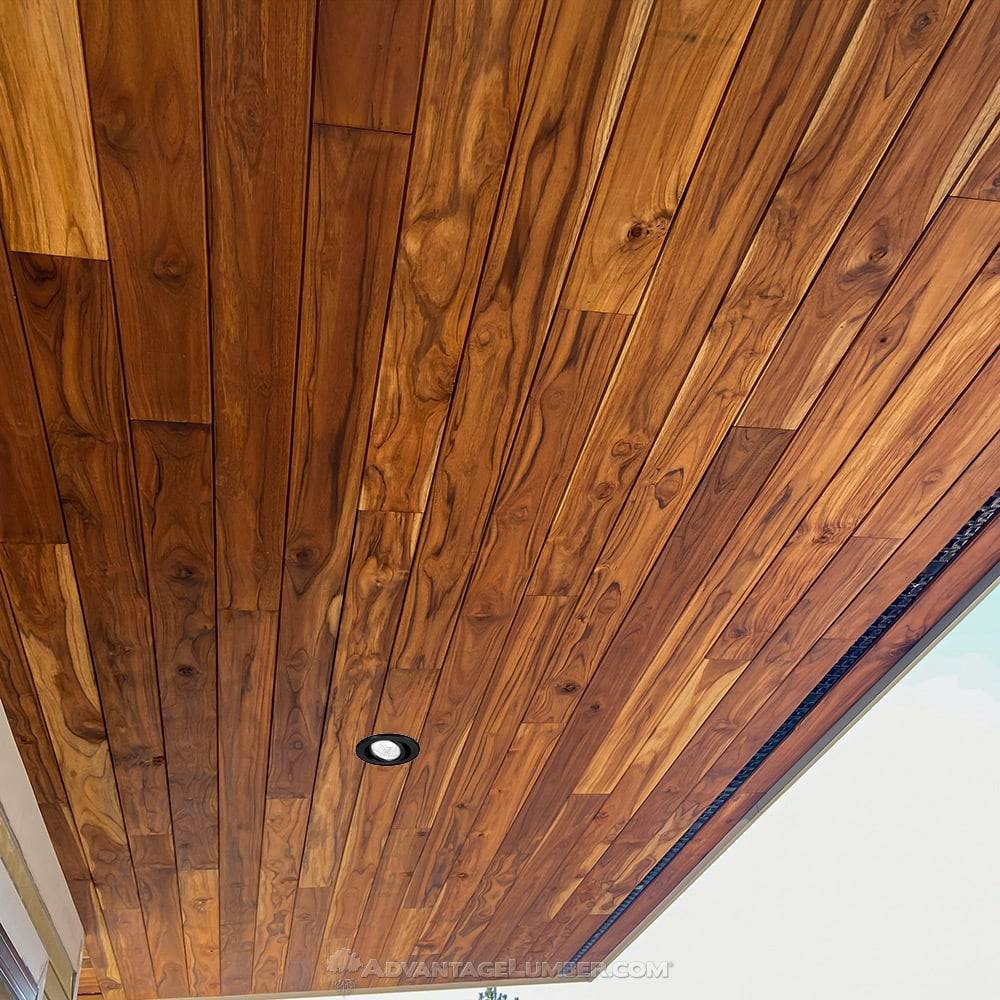When selecting materials for soffits, durability and aesthetics are paramount. Wood soffits not only provide natural charm but also ensure longevity when you choose the right species. Here are the best wood species for soffit applications:
1. Ipe
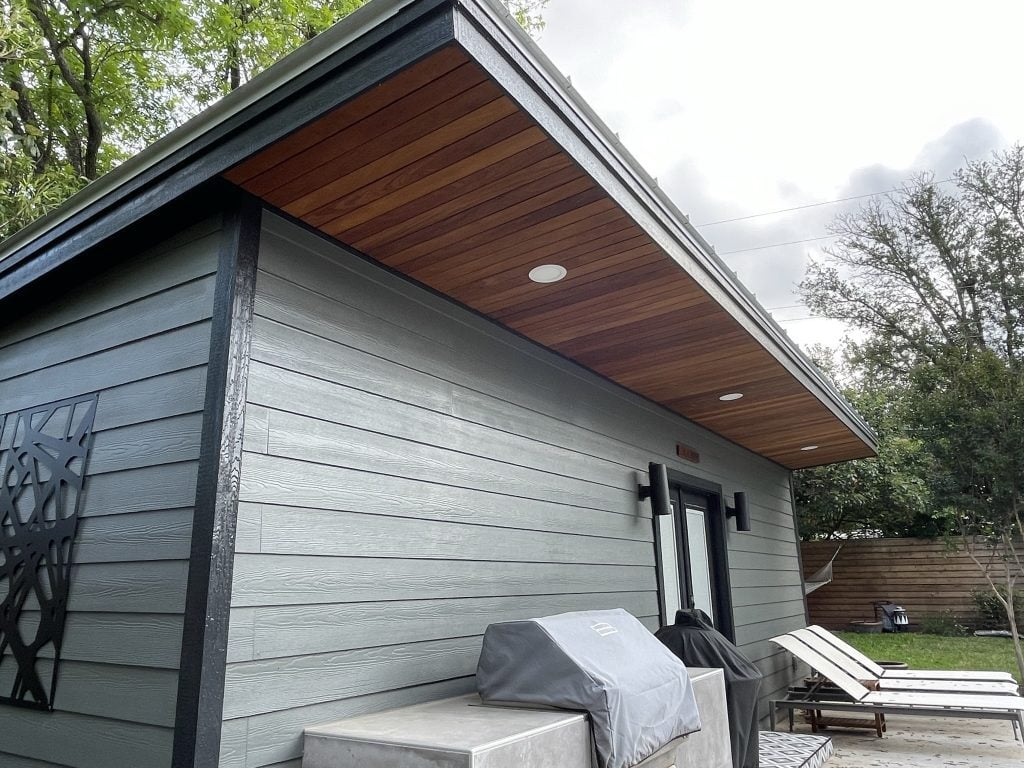
Known as one of the hardest woods in the world, Ipe is an exceptional choice for soffits. Its natural density and resistance to rot, insects, and weathering make it nearly maintenance-free. Ipe’s rich, dark brown tones add a luxurious touch to any building facade. Over time, it weathers beautifully to a silver-gray patina if left untreated.
Benefits:
- Extreme durability and hardness
- Natural resistance to rot and insects
- Long lifespan even in harsh climates
2. Cumaru
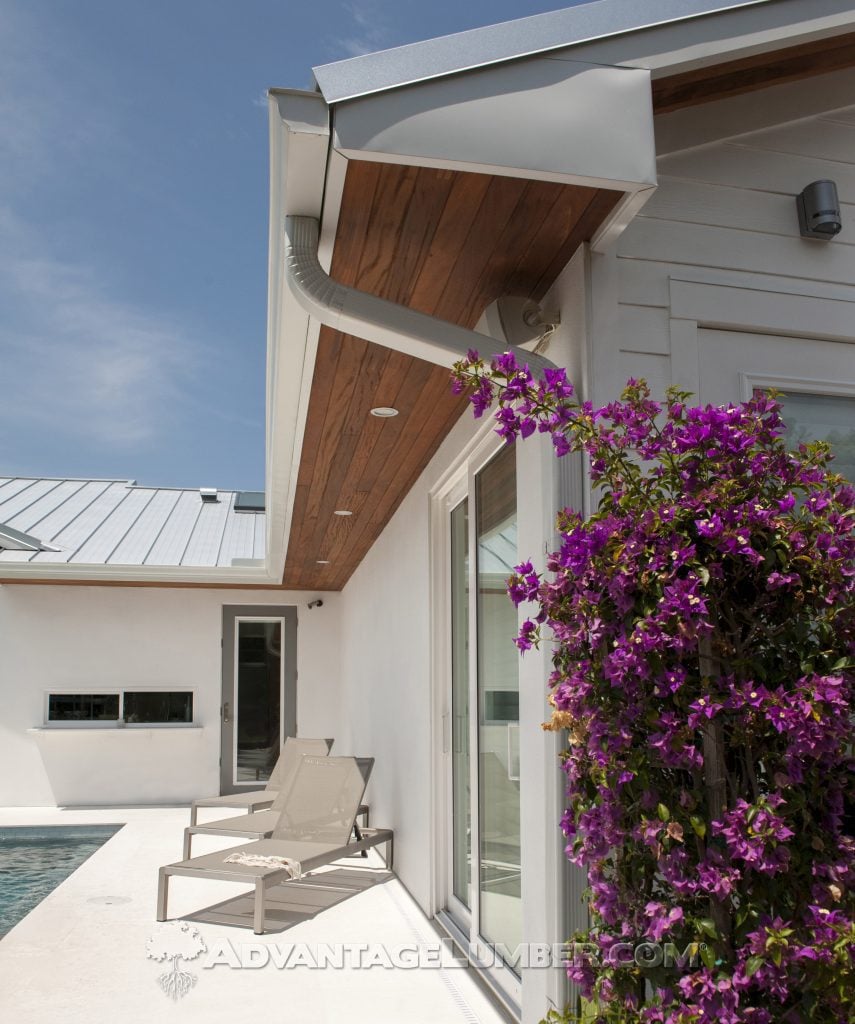
Often referred to as “Brazilian Teak,” Cumaru is another highly durable hardwood. Its warm golden to reddish-brown hues bring an inviting and elegant look to soffits. Like Ipe, Cumaru is naturally resistant to decay and insects, making it a long-lasting option for exterior applications.
Benefits:
- High density and durability
- Resistant to rot and insect damage
- Cost-effective alternative to Ipe
3. Tigerwood
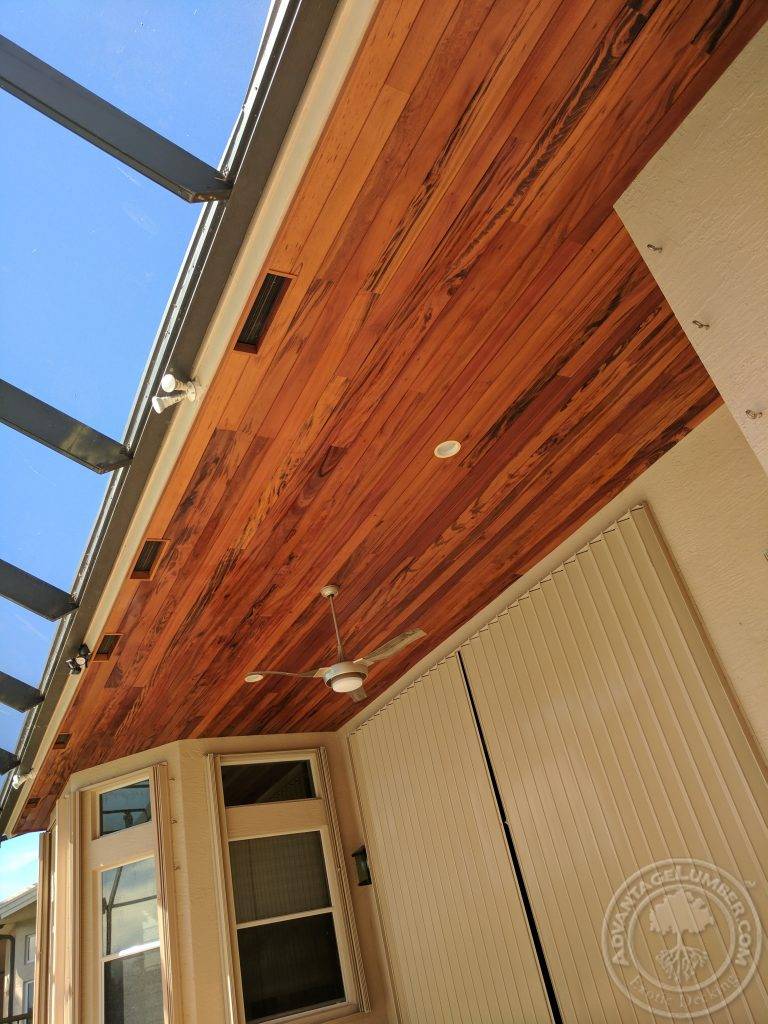
Tigerwood’s distinctive striped grain pattern makes it a standout choice for soffits. Beyond its beauty, this exotic hardwood offers exceptional durability and resistance to decay. Its unique color variations, ranging from reddish-orange to dark brown, can create striking soffit designs.
Benefits:
- Eye-catching, exotic grain patterns
- High resistance to rot and insects
- Durable and long-lasting
4. Garapa
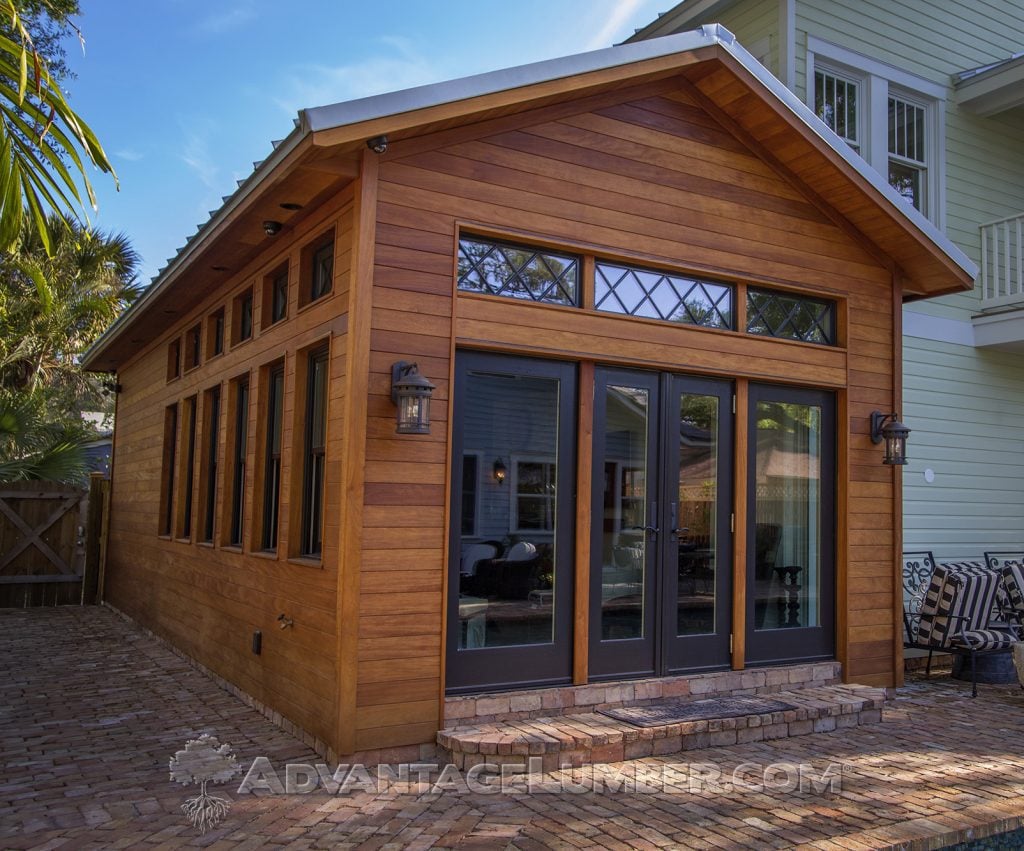
Garapa, also known as “Brazilian Ash,” is a lighter-toned hardwood that’s perfect for soffits if you prefer a golden-yellow appearance. It offers a naturally smooth finish and excellent resistance to decay and weathering, making it an excellent option for both modern and traditional designs.
Benefits:
- Naturally smooth and golden-toned
- High durability and weather resistance
- Cost-effective and low maintenance
5. Brazilian Redwood
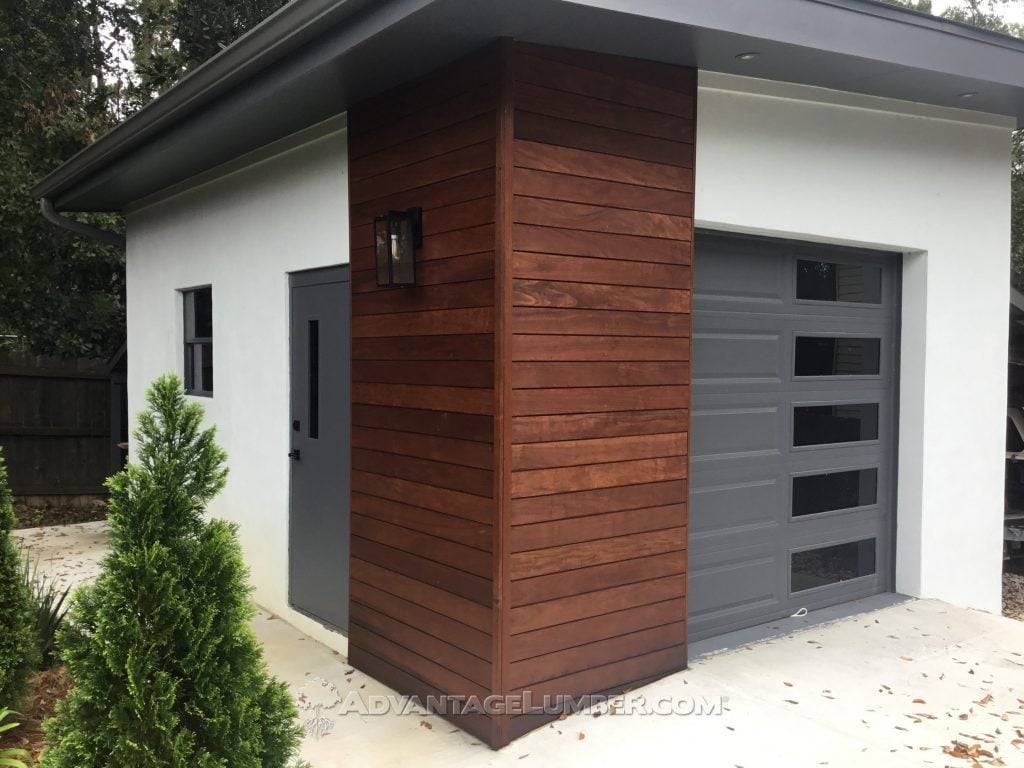
Brazilian Redwood combines stunning beauty with incredible durability. Its deep reddish tones make it an attractive choice for soffits, while its natural resistance to moisture, insects, and rot ensures it remains in great condition for decades.
Benefits:
- Rich, luxurious color
- Resistant to moisture and decay
- Ideal for high-end applications
6. Mahogany
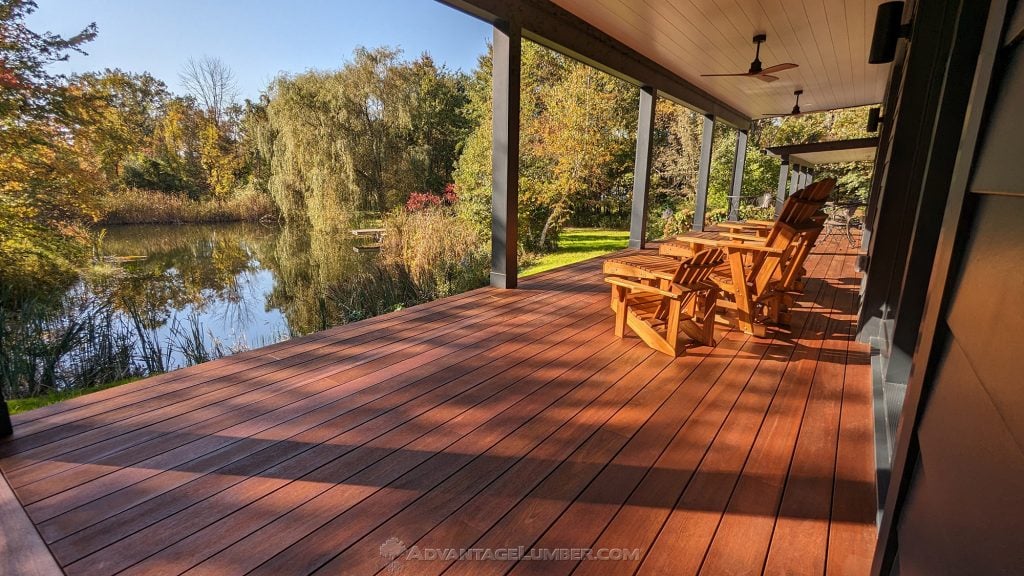
Mahogany is a classic choice for soffits due to its timeless appearance and reliable performance. This wood features a fine, straight grain and warm reddish-brown hues that add sophistication to any structure. Mahogany is also naturally resistant to rot and decay, ensuring its longevity.
Benefits:
- Timeless aesthetic appeal
- Smooth texture and consistent grain
- Naturally durable and resistant to decay
7. Thermally Modified Wood
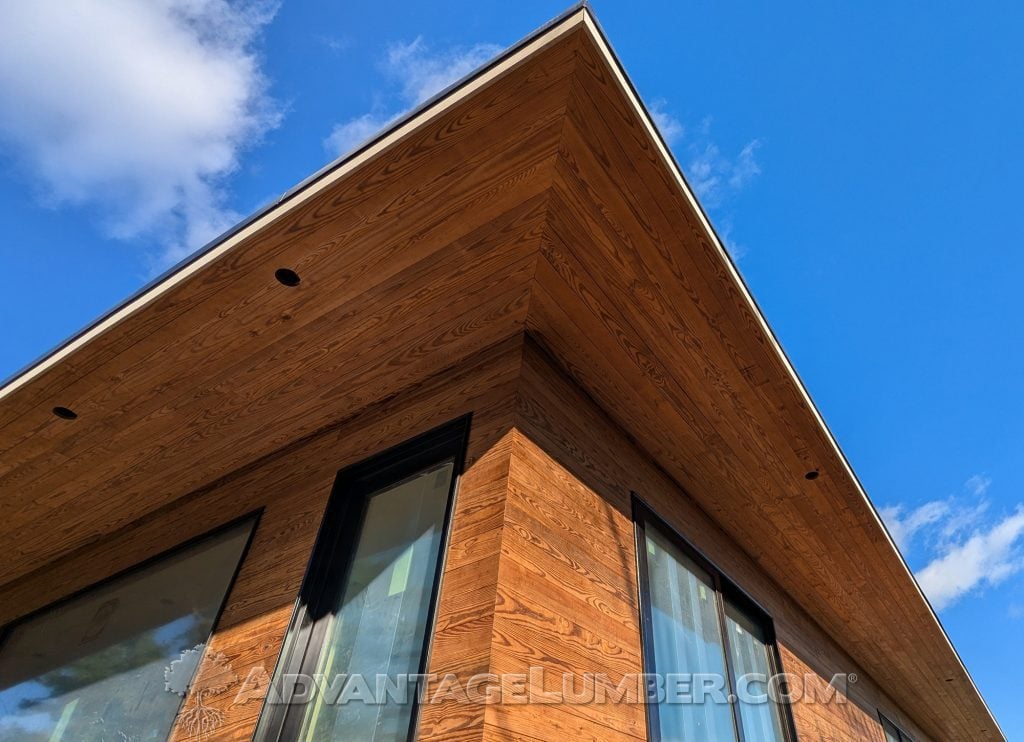
Thermally modified wood offers an innovative approach to soffit materials. This process enhances the durability and dimensional stability of wood species like Ash or Southern Yellow Pine by exposing them to high heat. Thermally modified wood is an eco-friendly and sustainable option that resists rot and insect damage.
Benefits:
- Enhanced stability and resistance to rot
- Eco-friendly and sustainable
- Available in various species and tones
8. Teak
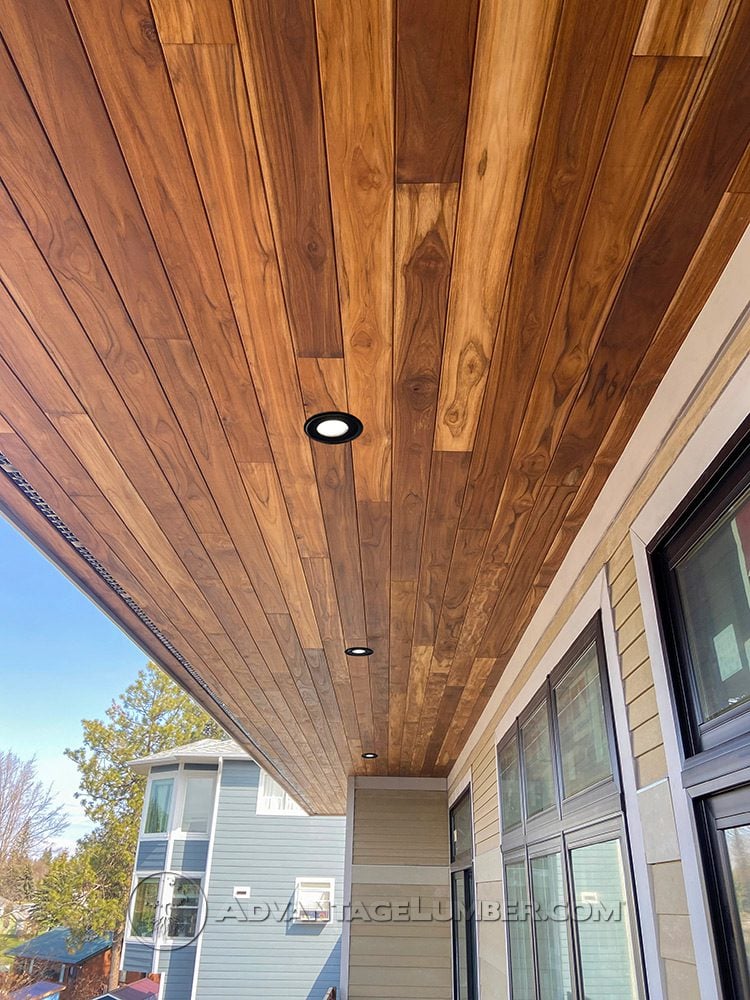
Teak is renowned for its unparalleled durability and resistance to weathering, making it an excellent choice for soffits in coastal or humid regions. Its rich golden-brown tones and natural oils help protect it from decay and insects, ensuring long-term performance.
Benefits:
- Superior weather resistance
- Naturally rich oils for added protection
- Luxurious appearance and long lifespan
Conclusion
Choosing the best wood species for soffits depends on your priorities, whether it’s durability, aesthetics, or environmental sustainability. Each of these woods—Ipe, Cumaru, Tigerwood, Garapa, Brazilian Redwood, Mahogany, Thermally Modified Wood, and Teak—offers unique advantages that make them exceptional for soffit applications. For unparalleled quality, consider sourcing your soffit wood from trusted suppliers like AdvantageLumber.com, where you can find these premium options to elevate your home’s exterior.
